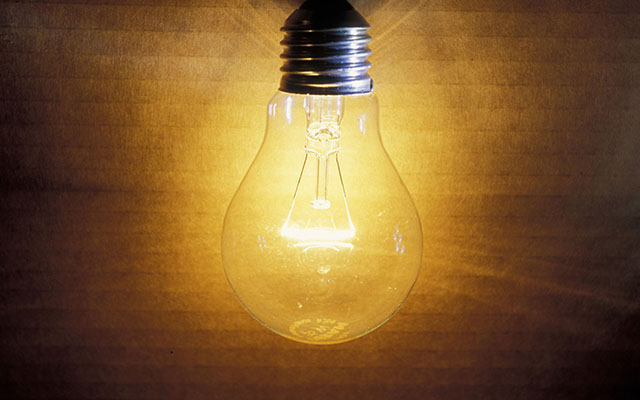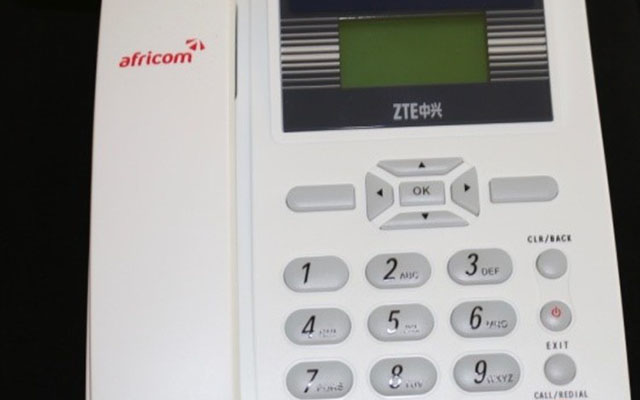Light bulbs ban to save 40MW

Jeffrey Gogo Climate Story
A NEW law that bans all trade, manufacture and use of inefficient incandescent bulbs will save Zimbabwe up to 40 megawatts of electricity, enough to power a small town like Rusape for days.
The ban – enacted via Statutory Instrument 21 of 2017 – comes into effect on May 1.
According to ZERA chief executive Engineer Gloria Magombo businesses had only three months (January 27 to April 30) to make the switch to low energy bulbs stock – a switch to compact fluorescent lamps (CFLs) and light emitting diode (LED) stocking.
Defaulters will be jailed six months or fined.
Engineer Magombo wants to see homes, schools and businesses put an end to the use of wasteful lighting systems – such like Thomas Edison invented-incandescent bulb, and fluorescent tubes – as part of broader measures to save power.
“ZERA is mindful that the phasing out of inefficient bulbs will be gradual,” she assured, by email.
“However, the supply side is expected to comply by stocking energy efficient bulbs and that is set to catalyse the transition towards the increased uptake of energy saving bulbs.”
By end of this year, “very few consumers will be using inefficient bulbs,” she predicted, adding that “the gains will be emerging through load reductions.”
How big is the switch over?
It is estimated that between 10 to 15 percent of electricity users in Zimbabwe light up their homes, schools and businesses using incandescent bulbs, ZERA says.
That is roughly one million users, based on a 2015 University of Zimbabwe study that showed 61 percent of citizens were not connected to the electricity grid.
Savings of between 30MW and 40MW from more efficient use in lighting could be very transformative for a country that’s been short on meaningful power generation infrastructure spend in recent decades.
The energy savings could be redirected into the anchor economic sectors of mining, manufacturing and agriculture, where frequent outages have more than halved production.
“It is cheaper to save electricity through adoption of efficient lighting systems, among other measures, than to invest in a new power station,” said ZERA’s Magombo.
Power utility, Zesa Holdings Ltd, is currently spending billions of dollars trying to expand the Kariba hydro and Hwange thermal, which will add a combined 900MW to the grid at completion, a few years from now.
The efforts are backgrounded by a sharp decline in power supply over the years, which has left industries and homes grounded.
But with more than 500 000 pre-paid electricity meters installed in households countrywide since 2012, and millions of low energy lights handed out to citizens by Zesa Holdings in the three years to 2015, the move to efficient energy use has already been underway.
“Since 2011, we have been urging local consumers to move away from the ordinary light bulb because of the (high) amount of energy it consumes, to those that save energy,” Rosemary Siyachitema, who heads the consumer rights group, Consumer Council of Zimbabwe, said by phone.
This could help create a virtual energy bank, she added.
What does the ban mean
for the environment?
Energy is the largest emitting industry in Zimbabwe, accounting for 49 percent of the national carbon emissions total, according to data from the Climate Ministry.
It is in this sector that Zimbabwe targets to achieve most of its emission – a 33 percent cut by 2030 – as part of its contribution to the global goal of curbing temperature rise at 2 degrees Celsius in this Century, under the Paris Agreement.
Savings of 40MW might appear like a very small drop – and it is – for a country desperate to meet over 2 000MW peak period demand.
But looked at in the context of the amount of avoided emissions, and even pricing, the picture changes.
A small coal-fired thermal plant like Munyati could emit up to 20 times as much carbon, a potent greenhouse gas, to generate 30MW of electricity, compared to a solar power plant of similar size, say experts.
Taking out heat efficiency rate and coal-type, Munyati can eat up 15 tonnes of coal to generate 30MW per hour, on the average, spewing the equivalent of 300 000kg of carbon dioxide equivalent into the atmosphere each hour, they say.
That is a rough picture of what 40MW savings could do to the climate change cause. Others disagree.
“It’s not that more efficient lighting would reduce carbon emissions but that more efficient lighting provides the opportunity for Africa to use a wider energy resource base that includes solar, small hydro and even low speed wind,” said Norbert Nziramasanga, a Zimbabwean electronics engineer, now based in New Zealand.
There have been concerns that pricing could frustrate the switch to higher efficiency lighting, which cost more.
But at an average cost of $2, the compact fluorescent lamp burns 8 times longer – the equivalent of two and half-years (at 8 hours of use per day) – against the 125 days that the incandescent bulb lasts, at 50c average price.
In a year, one could spend $13 on the filament light compared with $2,40 for the CFL, on the average.
Clearly, the ordinary bulb costs more in the long-term, both in price and energy consumption.
CFLs use about 24kWh whereas the filament consumes 130kWh per year, according to figures from ZERA.
Good bye incandescent bulb
Invented by American Thomas Edison nearly 150 years ago, the filament bulb has faithfully served humankind for a very long time, ushering them out of the dim candle-light into real electric light.
But as technologies improve, more and more countries are moving away from a tool they had grown accustomed to for decades, towards a more enlightened efficient type of lighting.
Across southern Africa, Zambia, Malawi, Mozambique, Namibia and South Africa have outlawed the incandescent bulb or are in the process of doing so, as part of regional efforts to save power, said Engineer Magombo.
In a few years’ time, the filament bulb might as well have developed fully as archival material, given to regular close inspections from amused viewers in museums across the globe.
“One could argue that the incandescent light bulb has worked itself to near extinction,” said Nziramasanga.
So long, incandescent!
God is faithful.









Comments